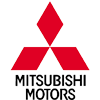 1982 Mitsubishi Tredia (A21_) Dimensions, Size & Specs
1982 Mitsubishi Tredia (A21_) Dimensions, Size & SpecsMeasurements of the 1982 Mitsubishi Tredia, engineered for optimal performance and comfort
| Dimensions | |
|---|---|
| Length: | 4280 mm168.5 in14.0 ft |
| Width: | 1660 mm65.4 in5.4 ft |
| Height: | 1370 mm53.9 in4.5 ft |
| Weight Specifications | |
| Curb Weight: | 940-975 kg2072-2150 lbs |
| Maximal permitted Weight: | 1440-1460 kg3175-3219 lbs |
| Roof Load: | 80 kg176 lbs |
| Tire Specifications | |
| Rims Sizes: | 13-inch rims:
|
| Tire Size: |
|
The Mitsubishi Tredia (A21), produced between 1982 and 1987, is a compact sedan that combines practicality with classic 1980s automotive design. Measuring 4280 mm (168.5 inches) in length, 1660 mm (65.4 inches) in width, and 1370 mm (53.9 inches) in height, the Tredia offers a balanced size ideal for urban driving and moderate passenger comfort. With a curb weight ranging from 940 to 975 kg (2072 to 2149 lbs), this model provides a lightweight structure that contributed to its fuel efficiency and agility. The maximum allowed weight of the vehicle varies between 1440 and 1460 kg (3175 to 3220 lbs), accommodating passengers and cargo without compromising performance. Its roof can support loads up to 80 kg (176 lbs), allowing some extra utility for luggage or roof racks. Equipped with 13-inch rims sized 4.5J to 5.5J and tires sized 185/70 R13, the Tredia delivers a stable and comfortable ride characteristic of subcompact sedans of its era. These dimensions and mechanical characteristics make the 1982-1987 Mitsubishi Tredia a notable example for car size comparison, especially for consumers and enthusiasts interested in compact sedans from the early 1980s.
Discover the standout features that make the 1982 Mitsubishi Tredia a leader in its class
Have a question? Please check our knowledgebase first.
The Mitsubishi Tredia (A21_) sedan from 1982 to 1987 has a length of 4280 mm (168.5 inches), a width of 1660 mm (65.4 inches), and a height of 1370 mm (53.9 inches). These dimensions make it a compact car that balances interior space and maneuverability, suitable for urban environments and typical parking facilities of its time.
With a width of 1660 mm (65.4 inches), the Mitsubishi Tredia offers a balance between interior space and ease of handling. This compact width allows for better maneuverability in narrow city streets and simplifies parking in tight spaces, making it well-suited for urban driving scenarios. Additionally, the relatively narrow stance contributes to nimble handling characteristics without sacrificing passenger comfort.
The Mitsubishi Tredia's height of 1370 mm (53.9 inches) is typical for compact sedans of the early 1980s. This relatively low profile contributes to improved aerodynamics, which can enhance fuel efficiency and reduce wind noise at higher speeds. Furthermore, while the lower height may limit headroom compared to taller sedans, it helps maintain a sleek design and a lower center of gravity, improving vehicle stability and handling.
The Mitsubishi Tredia weighs between 940 kg and 975 kg (2072 to 2149 lbs) when empty (curb weight). This relatively light weight benefits both performance and fuel economy. A lighter car generally accelerates quicker and handles more responsively, while also consuming less fuel compared to heavier vehicles. The compact dimensions combined with this curb weight made the Tredia an efficient choice during its production era.
The maximum gross weight of the Mitsubishi Tredia ranges from 1440 kg to 1460 kg (3175 to 3219 lbs). This figure includes the vehicle's curb weight plus passengers, cargo, and fuel. Given the curb weight of about 940–975 kg, this suggests a payload capacity of approximately 465–520 kg (1025 to 1146 lbs), which is adequate for typical small family use, groceries, luggage, and additional passenger weight without compromising safety or performance.
The Mitsubishi Tredia comes equipped with rim sizes ranging from 4.5J up to 5.5J with 13-inch diameter wheels, specifically 13-inch rims in the sizes of 4.5J and 5.5J. The tire size standard for this model is 185/70 R13. This combination was common for compact sedans of the era, offering a good balance between ride comfort, handling, and tire availability.
Yes, the Mitsubishi Tredia's compact dimensions - being 4280 mm (168.5 inches) long and 1660 mm (65.4 inches) wide - mean it will fit comfortably within a typical residential garage. Most standard garages have internal dimensions around 2.4 to 3 meters (7.9 to 9.8 feet) in width and at least 5 meters (16.4 feet) in length, providing ample space for the Tredia with room for opening doors and maneuvering within the garage.
The Mitsubishi Tredia was introduced to slot between smaller and larger models in Mitsubishi's range, and it did not have a direct predecessor under the exact model name. Compared to similar compact sedans from Mitsubishi in the previous era, the Tredia featured slightly more modern dimensions: a length of 4280 mm and a weight range of 940-975 kg, placing it in a competitive segment. It generally offered improved space efficiency and modernized styling, reflecting the automotive design trends of the early 1980s.
The Mitsubishi Tredia's size and weight are quite typical for early 1980s compact sedans, such as the Toyota Corolla E70 and Nissan Sunny B11. At 4280 mm length and 1660 mm width, it is slightly larger than some rivals, providing marginally more interior space. Its curb weight of around 940–975 kg is competitive, leaning toward the lighter side of the compact segment, which benefits fuel efficiency and handling. Overall, the Tredia holds its own as a balanced, efficiently sized compact sedan for its time.
With a length of 4280 mm, width of 1660 mm, and height of 1370 mm, the Mitsubishi Tredia offers compact yet practical interior space for passengers and cargo. While the narrower width limits shoulder room compared to larger sedans, the efficient packaging allows for comfortable seating for up to five occupants. The reasonably low height can affect headroom somewhat but contributes to a sporty profile. Cargo space is adequate for typical daily needs, with trunk capacity supporting groceries, luggage, and small equipment.
Discover similar sized cars.
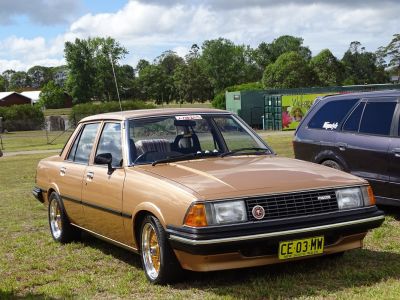
| Production: | 1979-1982 |
|---|---|
| Model Year: | 1979 |
| Length: | 4305 mm169.5 in |
| Width: | 1660 mm65.4 in |
| Height: | 1370 mm53.9 in |
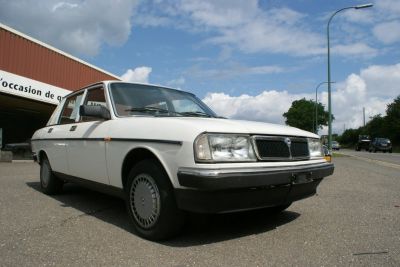
| Production: | 1982-1984 |
|---|---|
| Model Year: | 1983 |
| Length: | 4355 mm171.5 in |
| Width: | 1706 mm67.2 in |
| Height: | 1400 mm55.1 in |
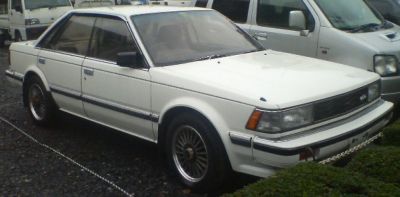
| Production: | 1983-1986 |
|---|---|
| Model Year: | 1983 |
| Length: | 4360 mm171.7 in |
| Width: | 1690 mm66.5 in |
| Height: | 1400 mm55.1 in |
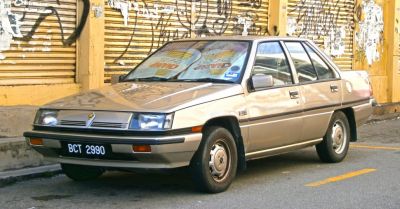
| Production: | 1985-1992 |
|---|---|
| Model Year: | 1985 |
| Length: | 4280 mm168.5 in |
| Width: | 1655 mm65.2 in |
| Height: | 1360 mm53.5 in |
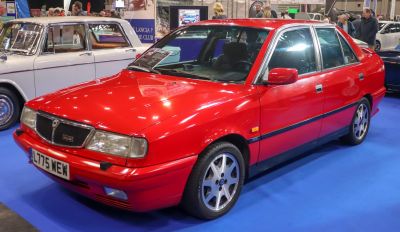
| Production: | 1989-1999 |
|---|---|
| Model Year: | 1989 |
| Length: | 4345 mm171.1 in |
| Width: | 1700 mm66.9 in |
| Height: | 1417-1430 mm55.8-56.3 in |
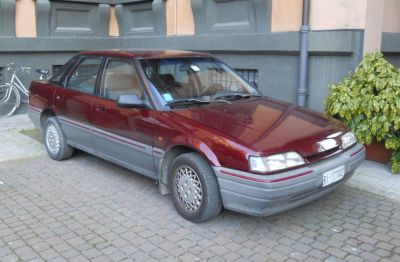
| Production: | 1990-1995 |
|---|---|
| Model Year: | 1990 |
| Length: | 4370 mm172.0 in |
| Width: | 1680 mm66.1 in |
| Height: | 1400 mm55.1 in |
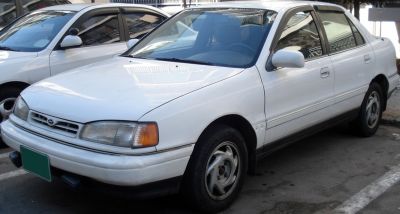
| Production: | 1990-1995 |
|---|---|
| Model Year: | 1990 |
| Length: | 4360 mm171.7 in |
| Width: | 1675 mm65.9 in |
| Height: | 1385 mm54.5 in |

| Production: | 1990-2000 |
|---|---|
| Model Year: | 1991 |
| Length: | 4352-4433 mm171.3-174.5 in |
| Width: | 1698-1843 mm66.9-72.6 in |
| Height: | 1393-1568 mm54.8-61.7 in |
